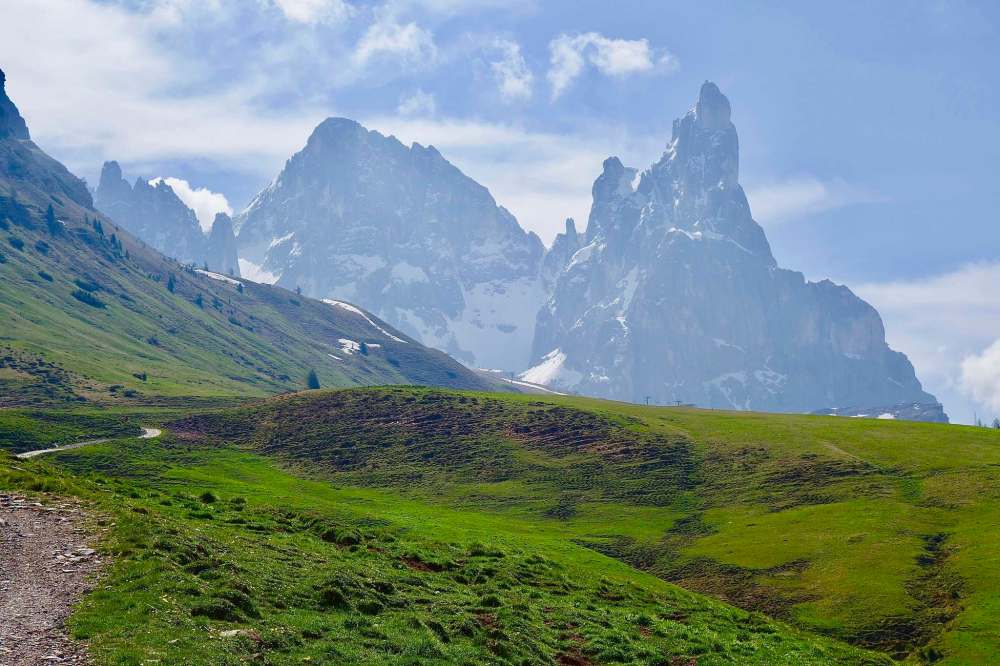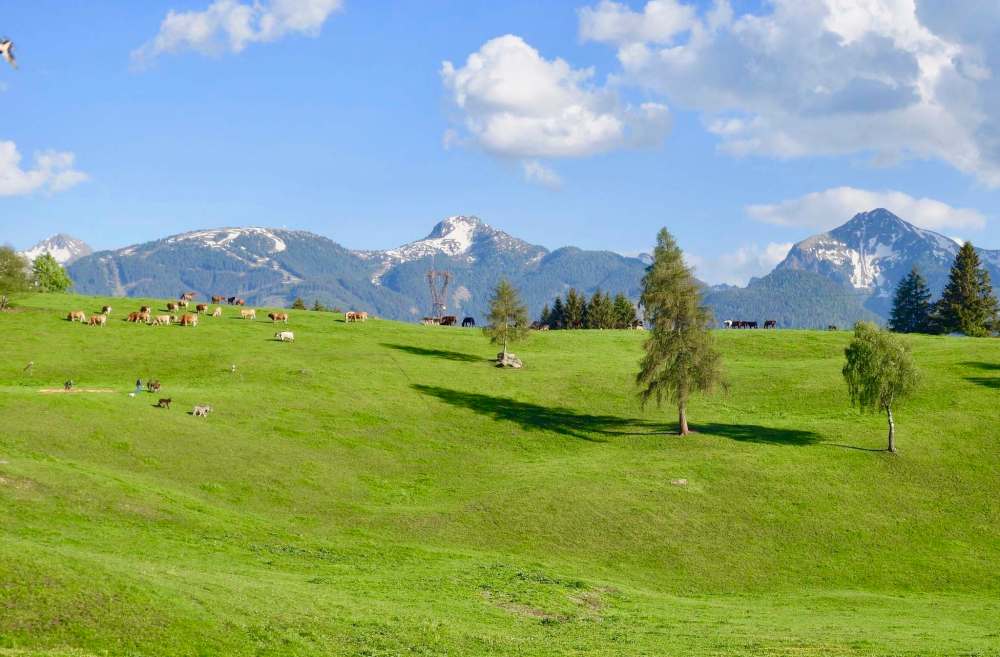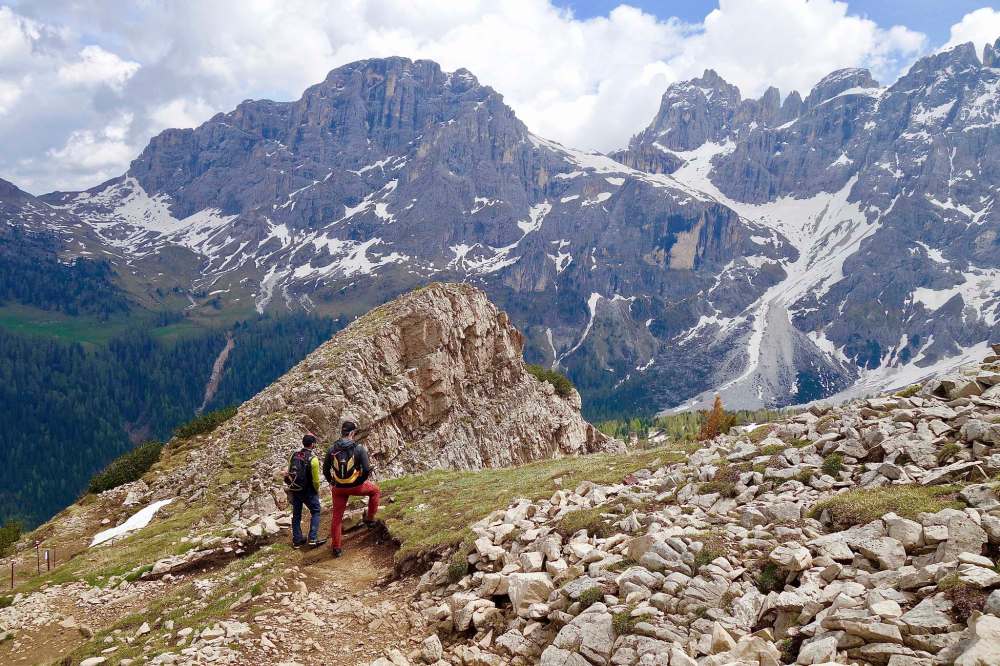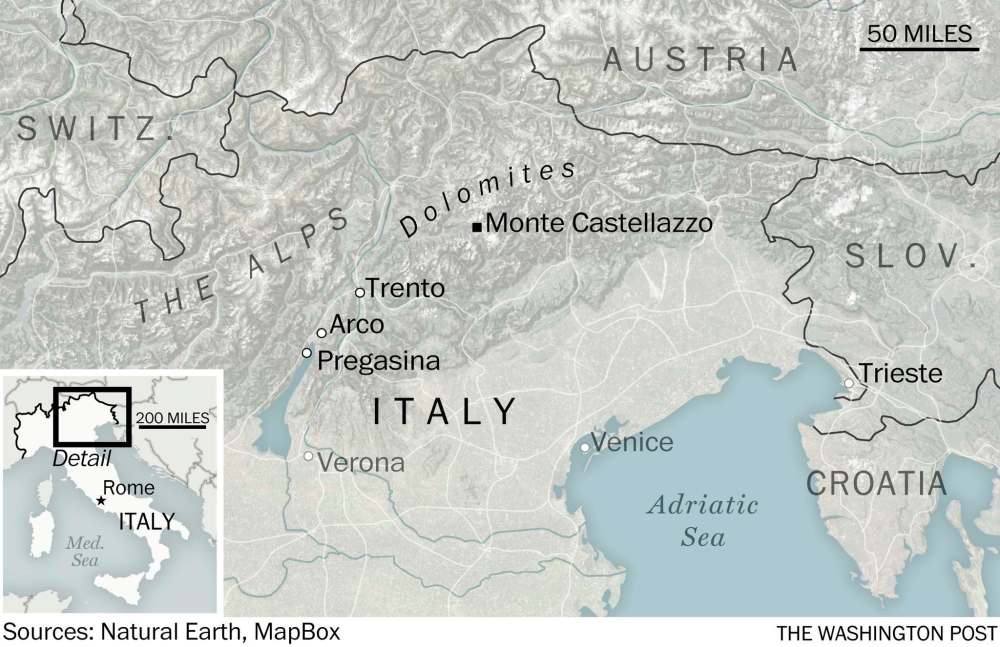Dolomites never disappoint
It's always a good time to visit mountainous region in Italy
Advertisement
Read this article for free:
or
Already have an account? Log in here »
To continue reading, please subscribe:
Monthly Digital Subscription
$1 per week for 24 weeks*
- Enjoy unlimited reading on winnipegfreepress.com
- Read the E-Edition, our digital replica newspaper
- Access News Break, our award-winning app
- Play interactive puzzles
*Billed as $4.00 plus GST every four weeks. After 24 weeks, price increases to the regular rate of $19.00 plus GST every four weeks. Offer available to new and qualified returning subscribers only. Cancel any time.
Monthly Digital Subscription
$4.75/week*
- Enjoy unlimited reading on winnipegfreepress.com
- Read the E-Edition, our digital replica newspaper
- Access News Break, our award-winning app
- Play interactive puzzles
*Billed as $19 plus GST every four weeks. Cancel any time.
To continue reading, please subscribe:
Add Free Press access to your Brandon Sun subscription for only an additional
$1 for the first 4 weeks*
*Your next subscription payment will increase by $1.00 and you will be charged $16.99 plus GST for four weeks. After four weeks, your payment will increase to $23.99 plus GST every four weeks.
Read unlimited articles for free today:
or
Already have an account? Log in here »
Hey there, time traveller!
This article was published 15/09/2018 (2586 days ago), so information in it may no longer be current.
I had two challenges to overcome when planning a late-May trip to Northern Italy’s Trentino-Sudtirol region: a major snow year and the off-season.
The first meant that the thousands of kilometres of trails in the rugged Dolomite mountains were still buried. The second meant that many of the high-alpine refugios, famed for hearty food and rustic lodging, were closed between winter and summer. One more thing — I arrived in the rain and the forecast called for more storms throughout my trip. For a trail runner eager to spend the night at staffed mountain huts while completing a multi-day traverse, things looked grim.
At least, that was my initial reaction. Then I connected with Sandro de Zolt, an internationally certified mountain guide and a gear tester for La Sportiva, the outdoor footwear and apparel company based in Val di Fiemme, a narrow valley at the base of the Dolomites where mountains loom over storied pine forests. Sandro was born and raised in a military station at Passo Rolle, where he learned to ski at age two and was scaling the mammoth cliffs of his backyard with his father at age seven.

Nothing to do in his home stomping grounds in May?
True, I wouldn’t disappear into the mountains for days at a time on this trip, he said. But with his guidance, I would get a well-rounded tour of the entire region — an idyllic mountainous area inhabited since ancient Roman times — through day hikes, local drives and, thanks to a happy scheduling coincidence, glimpses of some of the world’s best cyclists in the Giro d’Italia, a three-week, multistage, grand-tour race whose mountain stages overlapped with my stay in the area.
The chief highlight of a week that included many was a vigorous and scenic 24-kilometre hike that included summiting Monte Castellazzo and being guided to staggering views of enormous mountains and a huge statue of Jesus positioned in the pose of Rodin’s The Thinker. Sandro, a friend and I started hiking in the woods and followed a creek up a steep grade for about two kilometres before the trail jogged left and climbed to a grassy ridge. That’s when I was rendered speechless. Ahead of us, mountains powered out of the earth, bold giants of rock and ice with patches of snow clinging to the exposed cliffs, creating a beautiful mosaic of grey and white leaning into the sharp, blue sky.
An emerald field coloured by wildflowers spread out before the mountains, and in its centre was one of the region’s famous high-alpine refugios — which was, as expected, closed.
Sandro, who is also the chief of mountain rescue in Val di Fiemme, asked if we would be interested in an espresso. Of course we would. Once we regained our composure, we walked toward those incredible peaks, through which ran a narrow road and tiny village, until we reached Passo Rolle, home of the military station where he grew up as well as several hotels, a small ski area — and a roadside espresso stand.

Caffeinated, we continued upward to the summit of Monte Castellazzo. From the peak, we savoured simple sandwiches of salami and fresh mozzarella on Italian bread as we gazed down on a sprawling snowfield at the foot of a trifecta of classic Dolomite peaks (Bureloni, Vezzana and Cimon della Pala). It’s an understatement to say that I was absolutely not thinking about all the things I couldn’t do in the Dolomites at that time of year. Instead, I was immersed in the moment. Of all the pleasures in life, picnicking on a mountain while surrounded by even higher mountains is among my favourites.
Initially settled by the Romans in 15 BC, the Trentino-Sudtirol is made up of two self-governing provinces that are among the wealthiest in Italy. Before Italian control in the 1940s, however, this area was part of Austria-Hungary and, before that, the Austrian Empire and, before that, the Holy Roman Empire. During both world wars, the mountainous borders saw much conflict. Today’s refugios began as wartime bunkers.
Outdoor recreation started around the 1950s with the arrival of winter skiers and mountaineers eager to summit the high peaks. Cortina d’Ampezzo, a resort in the Dolomites, was the site of the 1956 Winter Olympics and is a stop on the present-day World Cup Circuit for alpine skiing. Fly-fishing has arrived, according to Sandro, and the multitude of trails, trams and chairlifts create an extensive adventure network interspersed with unique and charming villages. These towns are populated by hearty mountain folks, many of whom live in thick-walled, Tyrolean-style chalets that are hundreds of years old.
Unlike many mountain towns in North America, which typically began as mining, ranching or railway towns and have a more recent history, this area is thick with legacy. Many of the village residents, such as Sandro and his fiancée, Gulia Delladio — who will be the fourth generation to run La Sportiva, which her great grandfather founded in 1928 — have been there for generations. True, the mountains are the main draw. But I was pleasantly surprised to discover how much else there was to experience.
“Drive from the lake up and through Pregasina — it might feel like you’re going on someone’s driveway — until you reach the church. Park and then take any of the trails that start; they are all worthwhile.” So read Sandro’s text when I asked for a terrific, off-the-beaten-path hike near Lake Garda, Italy’s largest freshwater body.

At the lake’s edge, palm trees indicated a Mediterranean climate. In the tiny village of Pregasina, the church’s parking lot was full of cars, and a crowd of hikers spread out onto a web of trails. Trail 422A, Sandro’s suggestion, was a thin path that led to the land’s edge and then climbed over the undulating landscape to a prominent viewpoint. On my left was a sheer drop over the cliffs, hundreds of feet to the water, where sailboats bobbed like tiny toys. On my right, the forest thickened and burst with the sound of songbirds and rustling critters. The sky was overcast, but the views were still rewarding: stacks of mountains falling into the dark blue water below. The lake was vast, its end nowhere in sight.
A scene from my first day in the area captures the spirit of the people who live there. I drove from the airport in Verona to Trento, a city of about 100,000 residents, and promptly joined hundreds of Italians gathered in a cobblestone plaza to cheer Giro d’Italia riders sprinting through Stage 16, a 34.2-km time trial.
Individually, riders flew out of a starting gate as music boomed across the courtyard. The cyclists pedalled, brilliant in their spandex and awe-inspiring with their muscled speed, while the crowd bellowed in joy. I marvelled at the riders’ passion, endurance and strength, but it was the energy of the crowd — a friendly, determined spirit I would encounter throughout my week — that most impressed me. Coupled with the stunning landscape and delicious food, this hospitality reinforced something Sandro told me on our hike: there is no perfect time to visit because each month has its own appeal. I couldn’t agree more.
— Washington Post


